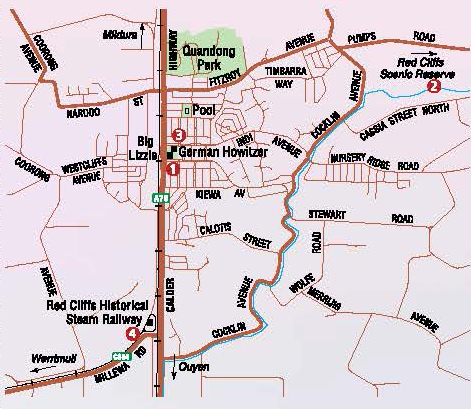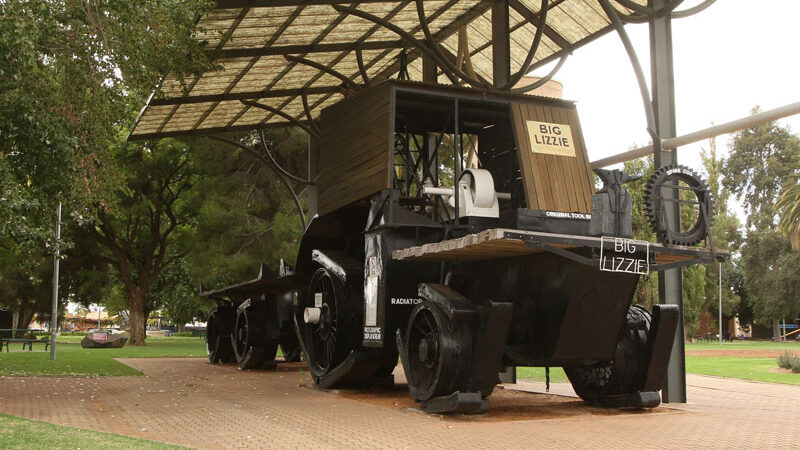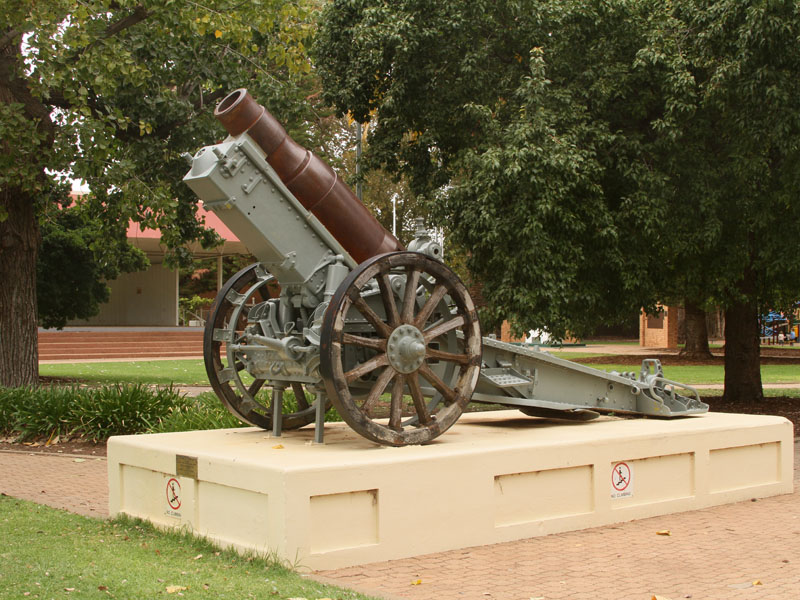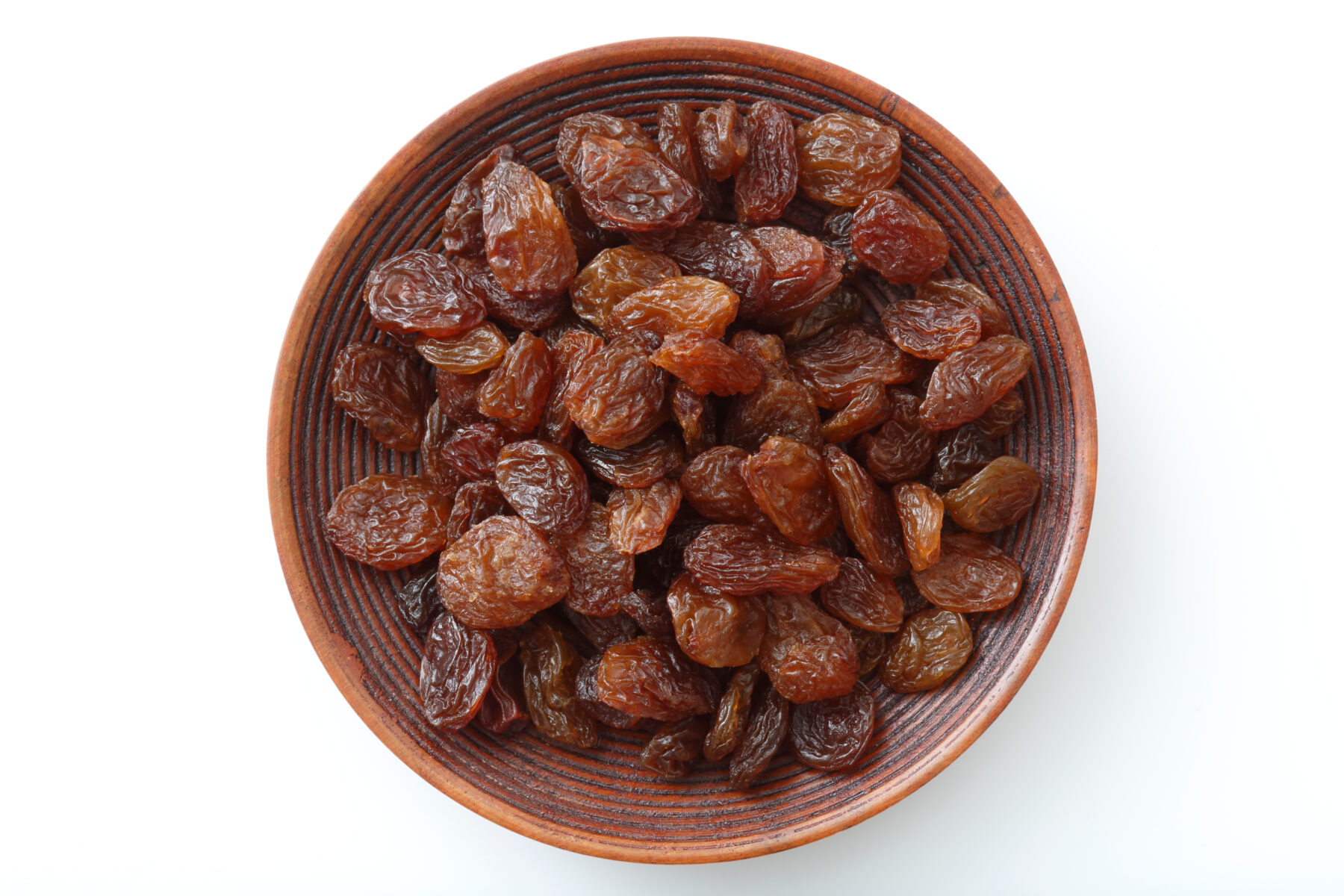A complete guide to Red Cliffs, VIC

Red Cliffs lies west of the Murray River, at the northern end of Victoria’s Mallee region in an area known as Sunraysia. Located on the fertile river plain only 14km south of the city of Mildura, this area is characterised by a Mediterranean climate of dry summers and mild winters.
Development began in the area just after World War I, in 1920–1921, when more than 700 returning soldiers were each offered 15 acres (6ha) and the tools to plant and grow grapevines specifically to produce sultanas. When land clearing at Red Cliffs began in 1920, the Victorian government hired a huge machine known as Big Lizzie to raze the native pine, belah and mallee trees. This engineering behemoth – the largest machine of its type in the country at the time – cleared 1500ha, making a vital contribution to the conversion of the area into arable land. At the same time one of the country’s largest irrigation pumping stations was built to bring water from the Murray River to farms. More soldier settlers were encouraged to move to the area after World War II and it grew to become Australia’s largest soldier settlement.
Today, vineyards, citrus farms and table grape-growing dominate the local agricultural economy. The Murray is more than just a water supply to the district’s agriculture. It’s a magnet for visitors who enjoy boating, kayaking, fishing, camping, picnicking and bushwalking, particularly between Karadoc, 13km east, and Colignan, 36km south-east, where red gum forests and black box woodlands grow among the river’s bends, billabongs and sandbars. Emus, kangaroos, birds and wildflowers are prolific in spring.

Location:
Red Cliffs is reached via the Calder Highway. It’s 14km from Mildura and 529km from Melbourne.
Origin of Name:
The town’s name is a simple statement of the obvious. The Murray River meanders to its east and the 70m cliffs, which rise on the western side of the river, are distinctly red.
Useful Websites:
Places of interest
1. Big Lizzie
You’ll find Red Cliffs’ most famous piece of machinery, Big Lizzie, on display in Barclay Square, opposite the former railway station. It’s a dreadnought wheel machine invented by Frank Bottrill, an Aussie blacksmith and engineer, in 1906, and built at Richmond in 1914–1915.

Lizzie was intended to cart wool from outback stations in the Broken Hill area. Just how big is it? It’s 10.7m long, 3.4m wide, 5.5m high and weighs about 45 tonnes. It was powered by a 60 horsepower, single-cylinder crude oil engine that had a carrying capacity of 80 tons, a maximum travelling speed of about 3km/h and a turning radius of 60m. With its two wagons attached the whole train was 30m long.
2. Red Cliffs Pumping Station and Scenic Reserve
To the east of the town, located along Fitzroy Avenue and Pumps Road, is the Red Cliffs Pumping Station, which was built from 1920 to 1923 to draw water from the Murray up over the red cliffs and into irrigation channels. At the time it was the Southern Hemisphere’s largest pumping station and the area was promoted as ideal for the growing of sultanas.
Before reaching the station, Woomera Avenue heads towards Cliff Top Lookout, which offers fine views over the 70m cliffs that rise from the Murray River. The 21ha Red Cliffs Scenic Reserve is reached along Woomera Avenue. It preserves a remnant of the local landscape as it was before the area was divided up during the soldier settlement scheme in the 1920s. Middens are evidence of the area’s long-term Indigenous connections. The reserve includes stairways, walkways, boardwalks and information signs.
3. German Howitzer Cannon
Located in Barclay Square and fronting the town’s main street is a rare Krupp 21cm Versuchs Mörser Nr 3M1907 gun, which is reputedly one of only eight that were built. It is said to be the only one on display anywhere in the world.

Its maximum range was about 7km, with each shell weighing about 119kg. The problem was that the gun was too heavy. Weighing more than 5t it had to be transported in two parts. The barrel was carried on a trailer pulled by a team of horses.
4. Red Cliffs Historical Steam Railway
Located 2km south of the town, on Millewa Road, is the Red Cliffs Historical Steam Railway. It was created in
1992 to operate the restored Kerr Stuart 0-4-2T steam locomotive named Lukee, which had previously operated between Red Cliffs railway station and the town’s pumping station.
In 2004 Red Cliffs Historical Railway purchased an EM Baldwin diesel locomotive, which was named Harry the Locomotive, and now regularly shares running days with Lukee.
The railway operates on the first Sunday of the month from April to December. The first run departs at 11am and the last run departs at 3.30pm. The journey takes about 25 minutes.

History
Before Europeans arrived to settle the district, the area was home to the Latji Latji people.
By 1918 Red Cliffs had been chosen as the site of what turned out to be the largest soldier settlement in Australia. Land was cleared for a nursery where millions of vine cuttings were grown, then 700 diggers began to arrive. They cleared the mallee scrub and cultivated vineyards with a view to establishing a dried fruit industry.
In 1920 Big Lizzie arrived in Red Cliffs to help clear the land.
By December 1920, 5000 acres (2024ha) had been cleared by the soldier settlers and divided into 295 blocks.
To draw water from the Murray River up the cliffs, the then largest pumping station in the Southern Hemisphere was completed in 1923.
By 1928 the pumping station was supplying 200km of irrigation channels.
After WWII, blocks were resold to war veterans, although many are now owned by southern
European immigrants.
Sultanas continued to be the dominant crop until the 1990s when wine became the main crop in the district.





